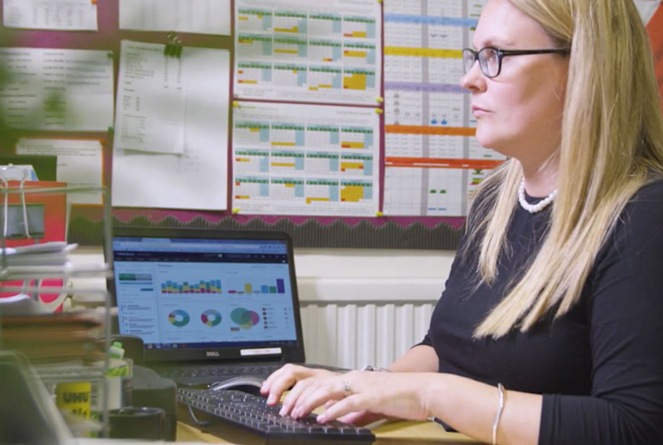An Epidemic in Education
Teacher workload is the leading epidemic in the education field. As a school leader, solving the problem of high workload for teachers is not easy, but it is key to managing prevalent issues like teacher retention, burnout, and absences.
The responsibilities of the already demanding job of a teacher have grown exponentially in recent years – from assessments to planning, managing students' behaviour and well-being to dealing with safeguarding issues and, of course, the actual teaching. It’s no surprise that most teachers describe their workload as excessive.
High teacher workload is not just a problem for the teachers themselves; it affects the mental health of everyone across the school community and can lead to lower pupil attainment levels. It is also the main contributor to why young teachers are leaving the profession altogether.
According to NASUWT, the Teachers’ Union:
- 4 in every 5 teachers say that their workload and the stress of the job have increased
- Over 50% of teachers say their workload has negatively affected their physical and mental health
- Over 65% of teachers say that they are seriously considering leaving the profession because of excessive workload
It’s clear that teacher workload cannot be taken lightly. But what can be done to tackle this issue? How can senior leaders reduce teacher workload in schools?
As a team made up largely of ex-headteachers and teachers, we know all too well the immense pressure and workload teachers currently face in schools.
Here are some of our strategies that schools can adopt to reduce teacher workload and ultimately, improve teacher well-being and keep them in their profession:
10 Ways to Reduce Teacher Workload
1. Use Technology Effectively
In the 21st century, there is an abundance of technology here to make your life easier. Make the most of the great tools available to automate routine tasks and save teachers’ time and effort.
Streamline work like teacher observations, sending parent updates, and managing employment contracts with easy self-service tools so teachers can focus on what really matters – teaching and taking care of children.
2. Streamline Feedback and Assessment Processes
Teachers often spend a significant amount of time assessing and providing feedback to students and parents. Schools can implement assessment platforms that support automated grading and monitoring, which saves teachers tons of time on assessing pupils and reporting.
Additionally, teachers can provide students with more opportunities for peer feedback and self-assessment opportunities to reduce their own workload while empowering pupils to take ownership of their learning – with close supervision, of course.
For communication with parents, consider how teachers can provide parents with updates efficiently without receiving an influx of responses (i.e. creating more work).
3. Collaborate and Share Responsibilities
Collaboration can reduce teacher workload and foster a sense of community. Teachers can share responsibilities and best practices and pool resources which can reduce the workload on individual teachers. Consider running roundtable sessions on a monthly or termly basis to share insights and resources among staff. You can also conduct surveys and evaluations to identify areas of strength and growth that can make room for more peer-led professional development.
4. Prioritise Tasks and Time Management
Schools can help teachers prioritise their tasks and manage their time more effectively by providing them with clear guidelines and deadlines. This helps teachers avoid burnout and ensures that they focus on the most important tasks first.
5. Review Performance Management Processes
School leaders can review performance management processes to ensure they are effective and not adding unnecessary workload to teachers. Performance management should be transparent, fair, and focused on professional growth rather than micro-management or accountability – so keep it simple.
6. Reduce Meetings
Ever heard the saying “this meeting could have been an email”? Do an audit of all your staff meetings and identify which ones can be made less frequent, shorter, or cancelled altogether. You can reduce the number of meetings that teachers need to attend by reviewing current communication processes and using more efficient methods of communication such as emails, newsletters, and chat tools like Microsoft Teams or Slack.
While it’s important to create an environment designed for shared productivity and in-person collaboration among staff, meetings should be organised, focused, and efficient to add value rather than take up precious time.
7. Provide Professional Development Opportunities
Offering professional development opportunities can help teachers improve their skills and knowledge, which can reduce teacher workload in the long run. Teachers can upskill by learning new pedagogical practices, classroom management strategies, assessment techniques, and time management skills, all of which can make their work more efficient. Track staff areas of growth to identify opportunities for professional development.
It’s important to facilitate teachers’ professional development in practical ways and ensure that their CPD is not simply adding to their current workload but helping them grow and yield more proficiency and efficiency in the long run.
8. Use the ‘DAD’ Framework
Use a framework like ‘Delete, Automate, Delegate’ (DAD) to filter out unnecessary tasks and to assess where the administrative burden lies. Some tasks could be automated to save time, whereas other tasks may be unnecessary or redundant.
9. Review Staffing Structures
Consider your current staffing structures to ensure that the right staff are carrying out the right roles and responsibilities. Look at the functions within your school and ask yourself the following:
- Is there an overlap or duplication of activities and tasks?
- Is the division of labour among staff fair and sensible?
- Are teachers burdened with tasks that others could undertake?
- Could we train and upskill certain members of staff to support with workload?
We recommend speaking with an HR consultant getting an objective audit of your school’s productivity and staffing infrastructure. A consultant can help you assess if your current staff and systems are working effectively across the school and what can be done to improve your operational efficiency.
10. Embrace AI Tools
Encouraging educators to integrate AI tools like ChatGPT into their teaching practices for lesson planning and daily task support can be a game-changer in the education landscape. By doing so, teachers can harness the power of AI to streamline lesson preparation, resource development, and even address common queries, saving precious time and effort.
However, establishing clear regulations and guidelines is essential to ensure responsible and effective use. These measures help guide teachers in utilising AI tools effectively, optimising their workload, and ultimately improving their overall productivity and the quality of education they deliver to pupils.
Explore further details on utilising AI to enhance teacher workload efficiency here.
In Conclusion
Reducing teacher workload is a critical issue that needs to be addressed with urgency. Failure to do so can severely negatively impact pupils, staff, and school leaders. Schools should try to adopt the above strategies to reduce teacher workload and create a positive work environment that promotes teacher and workplace well-being.
Get Help from Experts
Changing your whole school systems to reduce teacher workload can be overwhelming. Speak to one of our experts, who has over 100 years of experience in education HR, to get clarity on what you can do to reduce teachers’ workload. As market-leading software and service providers for education, we have the answers all under one roof and are here to help you and your school!
From Education HR Services, which includes payroll, finance, and people management, to pupil assessment trackers and parent engagement tools – get in touch with our dedicated team to find out how we can take the stress away from your teachers so they can focus more on what’s important – teaching!
Sources:


/Primary%20school%20.jpg?width=2000&name=Primary%20school%20.jpg)








.png?width=940&height=788&name=Lingfield%20College%20Case%20Study%20(5).png)
-1.png?width=1000&height=833&name=National%20Association%20of%20Head%20Teachers%20(3)-1.png)
-3.png?width=1080&height=1080&name=Untitled%20design%20(10)-3.png)







